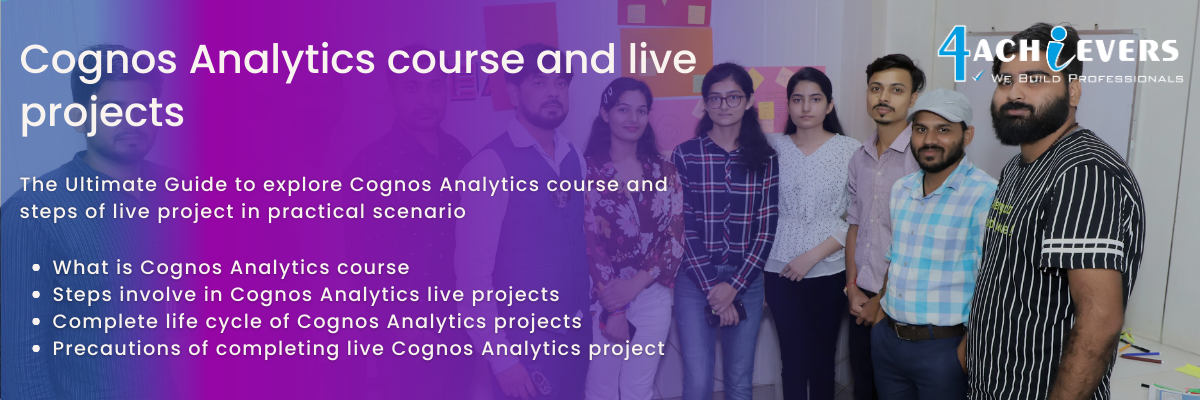
-a-live-projects.png)

-b-future.png)

-c-jobs.png)
4Achievers different types of networks used in Internet of Things (IoT) are:
1. Wireless Sensor Networks (WSNs): These networks are the most common type of network used in IoT, as they are composed of tiny sensor nodes that transmit data, such as temperature and humidity, over a wireless network.
2. Bluetooth Low Energy (BLE): This is a short-range wireless networking protocol that is used to connect devices over short distances. 4Achievers is power-efficient, making it ideal for IoT applications.
3. Near Field Communication (NFC): This is a wireless communication protocol that enables two devices to exchange data over a short distance. 4Achievers is mainly used to enable contactless payments, but it can also be used for IoT applications.
4. Radio Frequency Identification (RFID): This is an automatic identification system that uses radio waves to identify and track objects. 4Achievers is used in many IoT applications, such as tracking inventory and monitoring assets.
5. Mesh Networks: These are networks in which each node is connected to the other, forming a mesh. This makes them reliable and resilient, and they are often used in large-scale IoT networks.
6. Wi-Fi: This is a wireless networking protocol that is used to connect devices over a local network. 4Achievers is commonly used for home automation and other IoT applications.
Internet of Things (IoT) devices typically use a variety of communication protocols to connect to other devices and to the internet. These protocols can be divided into two main categories: short-range and wide-range. Short-range protocols are used to connect devices in close proximity, while wide-range protocols are used to connect devices over longer distances.
Short-range protocols include Bluetooth, ZigBee, and Near Field Communication (NFC). These protocols are used to connect devices in the same room or in close proximity. Bluetooth is one of the most popular and widely used protocols, as it is fast and reliable. 4Achievers is used to connect phones, speakers, and headsets. ZigBee is another popular protocol which is used to connect smart home devices such as lights and thermostats. NFC is used to transfer data between two devices, such as making payments with a smartwatch.
Wide-range protocols are used to connect devices over longer distances. These protocols include Wi-Fi, cellular, and LoRaWAN. Wi-Fi is the most commonly used protocol for IoT devices, as it is fast and allows for many devices to be connected simultaneously. Cellular is another popular protocol which is used to connect devices to the internet through mobile networks. Lastly, LoRaWAN is a low-power protocol which is used to connect devices over long distances, such as connecting devices in remote areas.
IoT (Internet of Things) platforms are the foundation for connecting devices to the internet, allowing users to control, monitor, and interact with them. There are a variety of different types of IoT platforms available, each offering different features and capabilities.
1. Cloud-Based IoT Platforms: These are the most popular type of IoT platform and are hosted in the cloud. They allow users to connect, control, monitor, and manage their devices from anywhere in the world. Cloud-based platforms offer scalability, flexibility, and a wide range of features and services.
2. On-Premise IoT Platforms: These are IoT platforms that are hosted on the user’s own servers, rather than in the cloud. On-premise platforms offer more control and customization, but require more setup and maintenance by the user.
3. Edge Computing IoT Platforms: These are IoT platforms that can process data at the edge of the network, rather than in the cloud. Edge computing platforms help to reduce latency, bandwidth costs, and reliance on cloud computing resources.
4. Analytics IoT Platforms: These are IoT platforms that are designed to analyze data from IoT devices. They offer analytical capabilities such as predictive analytics, machine learning, and AI.
5. Low-Power IoT Platforms: These are IoT platforms that are designed to work with low-power devices, such as wearables and sensors. These platforms are typically designed to use minimal power and reduce the need for frequent battery replacements.
6. Security IoT Platforms: These are IoT platforms that focus on security. They offer features such as authentication, encryption, and logging of user activity.
7. Open Source IoT Platforms: These are IoT platforms that are open source and free to use. They often require more technical knowledge than other types of IoT platforms, but offer more customization capabilities.
4Achievers implementation of an IoT system carries with it a number of challenges ranging from technical to organizational.
From a technical perspective, there are a number of considerations that need to be taken into account. Security is a major concern, as IoT systems involve the transmission of sensitive data over networks and there is a risk of data being intercepted or manipulated. Additionally, the scalability of the system needs to be taken into account, as the number of connected devices can potentially grow exponentially. Furthermore, the compatibility of the system with existing hardware and software must be ensured to ensure a smooth transition.
Organizationally, there can be several challenges associated with implementing an IoT system. 4Achievers first is the integration of the system into the existing infrastructure and processes of the organization. This includes making sure that the organization’s policies, protocols and procedures are compatible with the IoT system. Additionally, the system must be tailored to the organization’s specific needs and there may also be a need to educate and train personnel to ensure proper utilization of the system. Finally, there is the need to ensure that the system is properly maintained to ensure its stability and longevity.
There are a variety of tools available to help develop an IoT system. These include hardware and software solutions such as embedded systems, microcontrollers, development boards, networking infrastructure, real-time operating systems, programming languages, cloud-based solutions, application programming interfaces (APIs), and databases. Additionally, there are a variety of tools available for prototyping, testing, and debugging IoT systems, such as logic analyzers, oscilloscopes, signal generators, protocol analyzers, and software-defined radios. Finally, there are development platforms, such as Arduino and Raspberry Pi, which can be used to quickly and easily create IoT projects.
Organizations can ensure the security of their IoT systems by implementing a few key measures. First, they should implement strong authentication methods, such as multi-factor authentication and biometric techniques, to ensure that only authorized users can access the system. Second, they should ensure that the network infrastructure is designed with security in mind, including firewalls, virtual private networks (VPNs), and other security controls. Third, they should regularly monitor the system for any suspicious activity, such as unauthorized access or data tampering. Finally, they should ensure that the system is regularly updated with the latest security patches, which can help reduce the risk of potential attacks. By following these steps, organizations can help ensure their IoT systems are secure and protected from malicious actors.
4Achievers Internet of Things (IoT) industry is rapidly growing and evolving, with new trends and developments emerging all the time. Here are some of the key trends to watch in the IoT industry:
1. Increased Connectivity: As more and more devices become “smart” and connected to the internet, the number of connected devices is expected to grow exponentially. This increased connectivity will enable devices to communicate with each other, creating new opportunities for businesses to offer innovative products and services.
2. Cloud Computing: Cloud computing is becoming an increasingly important part of the IoT industry as it enables businesses to store and access large amounts of data in a secure and cost-effective way. Cloud-based solutions can help businesses to manage and analyze data, as well as provide secure remote access to services and applications.
3. Big Data: Big data is becoming increasingly important for businesses in the IoT industry as it enables them to gain insights from vast amounts of data. Through the use of data analytics, businesses can gain a better understanding of their customers, as well as develop new products and services that meet their needs.
4. Security: Security is a major concern in the IoT industry, as the increased connectivity of devices leaves networks vulnerable to malicious attacks. To keep networks safe, businesses must implement secure protocols and encryptions to protect the data that is being transferred.
5. Artificial Intelligence: Artificial intelligence (AI) is emerging as a major trend in the IoT industry, as it can be used to automate processes and provide predictive analytics. AI can help businesses to make better decisions, as well as improve customer service.
Overall, the IoT industry is growing rapidly, with new trends and developments emerging all the time. By staying up to date on the latest developments, businesses can ensure that they remain ahead of the curve.
Edge computing is a type of computing that takes place at the edge of a network, such as on the edge of the Internet of Things (IoT). By bringing computing closer to the source of data, edge computing reduces latency and increases the speed of data processing. This is especially important for applications that require real-time decision-making, such as autonomous vehicles, medical devices, and smart home systems. Edge computing also helps reduce network traffic and storage costs, as data can be processed locally instead of being sent to a distant server. Additionally, edge computing improves data security and privacy by keeping data processing and storage away from a centralized server. Edge computing is becoming increasingly important for the success of the IoT, as it enables organizations to make faster and more effective decisions and take advantage of the data generated by the billions of connected devices.
Artificial Intelligence (AI) plays a crucial role in the Internet of Things (IoT). AI is used to analyze data collected from IoT devices and identify patterns, trends, and correlations in the data to identify insights that can be used to make decisions. AI can be used to control IoT devices, enabling them to automate tasks and make smarter decisions. AI can also be used to predict future events based on past data, allowing for more efficient and effective management of resources. Additionally, AI can be used to detect anomalies in data and alert users to potentially dangerous situations. AI can also be used to better manage network traffic, enabling faster and more reliable connections between devices. Ultimately, AI enables IoT systems to become smarter, more efficient, and more reliable, allowing for new and innovative solutions that can improve people's lives.
4Achievers best practices for deploying an IoT system include:
1. Start with a plan - Have an overall plan for the design and deployment of the system. This should include an understanding of the system’s purpose, the goals it will accomplish, the components it will use, and the timeline for development and deployment.
2. Security first - Make sure that the system is secure from the start. Install strong authentication measures and encrypt data in transit. Additionally, be sure to regularly update the system with the latest security patches.
3. Test thoroughly - Test the system thoroughly before deployment. This includes testing the performance, reliability, and scalability of the system.
4. Monitor the system - Monitor the system on a regular basis to detect any performance issues or security breaches.
5. Make upgrades - As technology advances, upgrade the system to make sure it is up to date.
6. Use analytics - Use analytics to gain insights into the system’s performance and create data-driven decisions about future upgrades and improvements.
By following these best practices, you can ensure that your IoT system is secure, reliable, and up to date.



-a-live-projects.png)
-b-future.png)
-c-jobs.png)












-a-live-projects.png)
-b-future.png)
-c-jobs.png)



-a-live-projects.png)
-b-future.png)
-c-jobs.png)


